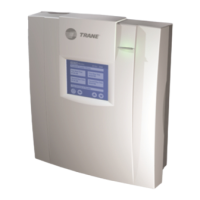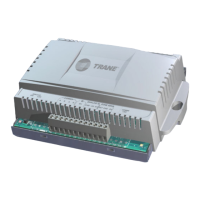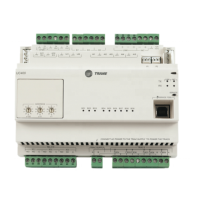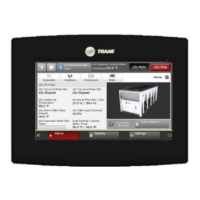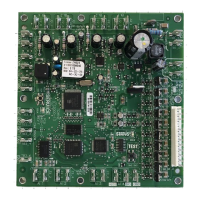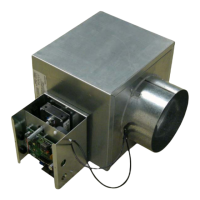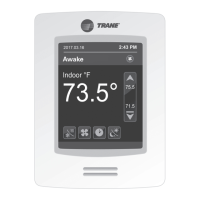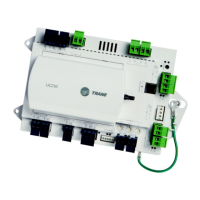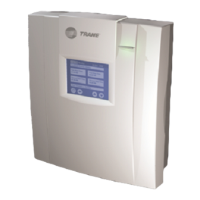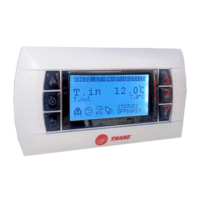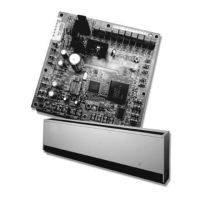Checking inputs
CNT-SVN01C-EN 27
Checking inputs
Follow the procedures in this section to test inputs for proper operation.
IMPORTANT
Perform the tests in this section before providing power to the termina-
tion board or installing the main circuit board. Failure to do so will
result in incorrect multi-meter readings.
To test inputs for proper operation, you need the following tools:
• Digital multi-meter
• Small flat-tip screwdriver
Checking thermistor inputs
To check thermistor inputs for proper operation:
1. Make sure that the sensor is connected.
2. Set the multi-meter to measure Vac, then measure the voltage across
the input at the signal and common screw terminals.
The measured voltage should be less than 0.1 Vac. If the voltage is
greater than this, temperature readings may change erratically.
3. Set the multi-meter to measure Vdc, then measure the voltage across
the input at the signal and common screw terminals.
The measured voltage should be less than 0.1 Vdc. If the voltage is
greater than this, temperature readings may be offset from the
expected results.
CAUTION
Equipment damage!
Continue to step 4 only if you completed steps 2 and 3 successfully.
Measuring resistance may damage the meter if the voltage is too high.
4. Set the multi-meter to measure resistance. If you completed steps 2
and 3 successfully, measure the resistance across the input at the sig-
nal and common screw terminals.
The resistance should be between 241 kΩ and 837 Ω, which translates
to temperatures of –30°F and 200°F (–34°C and 93°C). Specific tem-
peratures and resistances are shown in Table 6 on page 28.
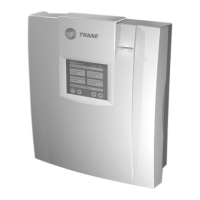
